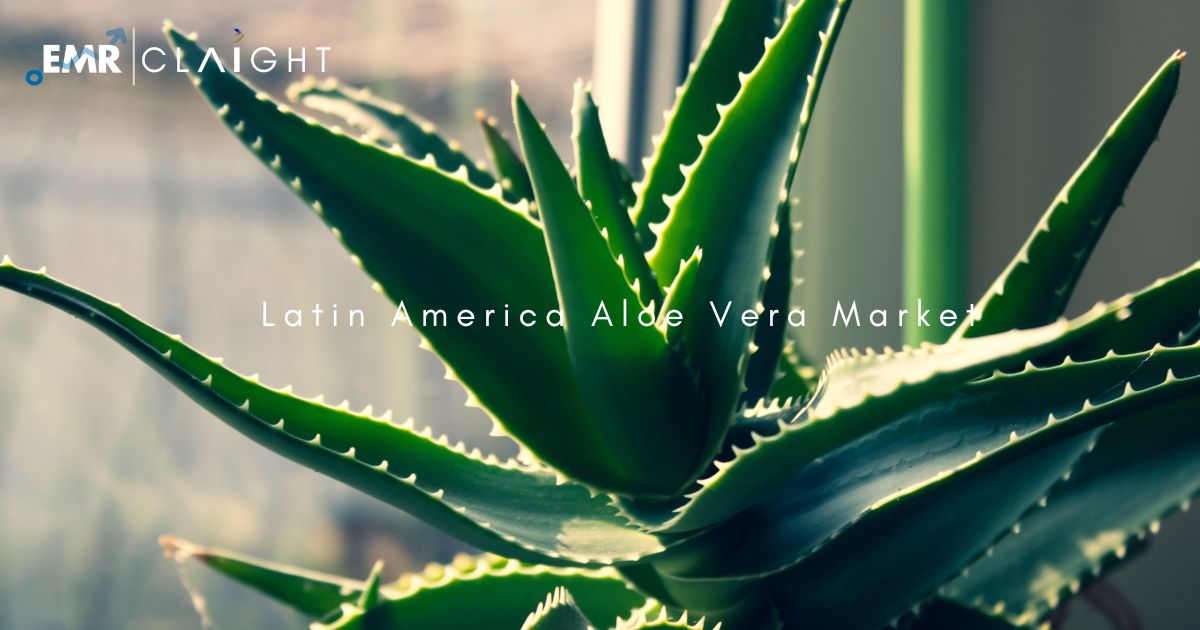
The aloe vera market represents a significant segment within the global herbal and natural products industry, focusing on the cultivation, processing, and utilization of aloe vera, a succulent plant species known for its medicinal, cosmetic, and nutritional properties. Aloe vera (Aloe barbadensis Miller) has been utilized for centuries in traditional medicine and skincare practices, valued for its soothing, moisturizing, and healing effects on the skin, as well as its potential health benefits when consumed internally. The aloe vera market encompasses diverse products such as aloe vera gel, juice, extracts, supplements, cosmetics, and pharmaceuticals, catering to consumer demand for natural, plant-based remedies and wellness products.
History
The history of aloe vera usage can be traced back thousands of years to ancient civilizations such as Egypt, Greece, China, and India, where it was revered for its therapeutic properties and medicinal applications. Aloe vera has been mentioned in historical texts, medical manuscripts, and folklore as a remedy for skin ailments, digestive disorders, wounds, and infections. The widespread cultivation and commercialization of aloe vera began in the 20th century, driven by scientific research, technological advancements, and growing consumer interest in natural health and wellness products.
Cultivation and Production
Aloe vera is cultivated in various regions around the world, including tropical and subtropical climates where it thrives in well-drained soils with ample sunlight and moderate rainfall. Commercial aloe vera cultivation involves the following steps:
- Site Selection: Aloe vera plants are grown in well-drained sandy or loamy soils with good aeration and drainage to prevent waterlogging and root rot. Suitable growing conditions include warm temperatures, low humidity, and minimal frost risk.”
- Propagation: Aloe vera plants are propagated through offsets, also known as pups, which are small shoots or suckers that emerge from the base of mature plants. These offsets are separated from the parent plant and replanted to establish new aloe vera crops.
- Cultivation Practices: Aloe vera cultivation may involve organic or conventional farming practices, depending on the desired certification, market requirements, and environmental considerations. Common cultivation practices include irrigation, fertilization, weed control, and pest management to ensure optimal plant growth and yield.
- Harvesting: Aloe vera leaves are harvested when they reach maturity, typically after 2-3 years of growth. Leaves are carefully removed from the plant using sharp knives or shears, taking care not to damage the remaining foliage or roots.
- Processing: Harvested aloe vera leaves are processed to extract the gel, a mucilaginous substance found in the inner leaf parenchyma. Processing methods may include manual filleting, crushing, grinding, or mechanical extraction to obtain aloe vera gel, which is then stabilized, filtered, and packaged for commercial use.
Applications
Aloe vera finds diverse applications in various industries and products:
- Skincare and Cosmetics: Aloe vera gel is widely used in skincare and cosmetic products such as moisturizers, lotions, creams, sunscreens, and hair care formulations. It moisturizes, soothes, and rejuvenates the skin, providing relief from sunburn, irritation, inflammation, and dryness.
- Nutraceuticals and Dietary Supplements: Aloe vera extracts, juices, and supplements are consumed for their potential health benefits, including digestive support, immune modulation, antioxidant activity, and anti-inflammatory effects. Aloe vera is available in various forms such as capsules, tablets, powders, and drinks for oral consumption.
- Pharmaceuticals and Medicinal Products: Aloe vera is utilized in pharmaceutical formulations and medicinal products for its wound healing, antimicrobial, anti-inflammatory, and analgesic properties. It is used topically in ointments, gels, and dressings for burns, cuts, wounds, and skin conditions.
- Functional Foods and Beverages: Aloe vera gel and juice are incorporated into functional foods and beverages such as health drinks, smoothies, juices, yogurts, and desserts. Aloe vera is valued for its nutritional content, including vitamins, minerals, amino acids, and polysaccharides, which contribute to overall health and wellness.
Market Dynamics
The aloe vera market is influenced by factors such as consumer awareness, product innovation, regulatory standards, market competition, and supply chain dynamics. Consumer demand for natural, plant-based products, combined with growing interest in health and wellness, drives market growth and innovation in aloe vera products and formulations.
Regional Landscape
Major producers and consumers of aloe vera products include countries such as the United States, Mexico, China, India, South Africa, and Australia. These countries have favorable climates for aloe vera cultivation and processing, as well as established markets for aloe vera-based products in healthcare, skincare, cosmetics, and dietary supplements.
Challenges and Opportunities
The aloe vera market faces challenges related to quality control, sustainability, adulteration, market fragmentation, and regulatory compliance. Issues such as variability in aloe vera quality, contamination risks, and supply chain transparency require industry stakeholders to implement stringent standards, traceability systems, and ethical sourcing practices.
However, there are opportunities for market growth, including investments in research and development, product differentiation, value-added processing, and market expansion. Emerging trends such as clean label ingredients, organic certification, and functional formulations offer avenues for innovation and market differentiation in the competitive landscape of the aloe vera market.
Future Outlook
The aloe vera market is poised for continued growth and diversification, driven by factors such as consumer demand for natural remedies, lifestyle products, and functional ingredients. As scientific research advances and consumer preferences evolve, aloe vera is expected to play a significant role in the global health and wellness industry, offering sustainable solutions for skincare, nutrition, and holistic healthcare.
In conclusion, the aloe vera market represents a dynamic and promising sector within the herbal and natural products industry, providing valuable ingredients and formulations for personal care, healthcare, and nutrition. With its rich history, versatile applications, and therapeutic properties, aloe vera continues to captivate consumers and industry stakeholders alike, driving innovation, sustainability, and wellness in the modern marketplace.
Read More Reports:
https://www.informesdeexpertos.com/informes/mercado-de-mezcal
https://www.informesdeexpertos.com/informes/mercado-de-frutas-y-verduras-en-mexico
https://www.informesdeexpertos.com/informes/mercado-de-aceite-vegetal
https://www.informesdeexpertos.com/informes/mercado-de-calzado-deportivo
https://www.informesdeexpertos.com/informes/mercado-de-calzado